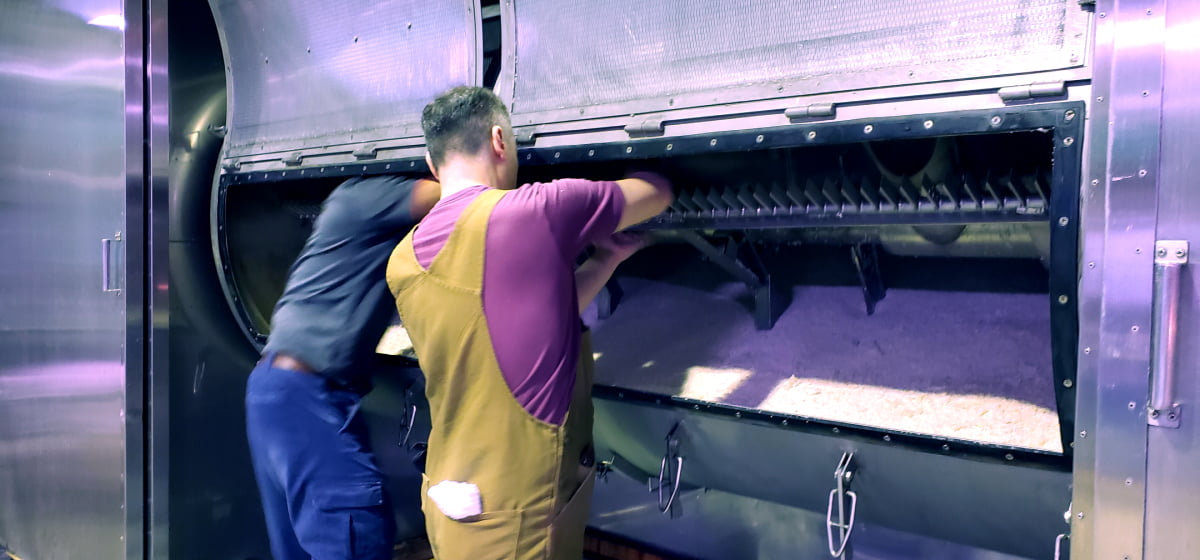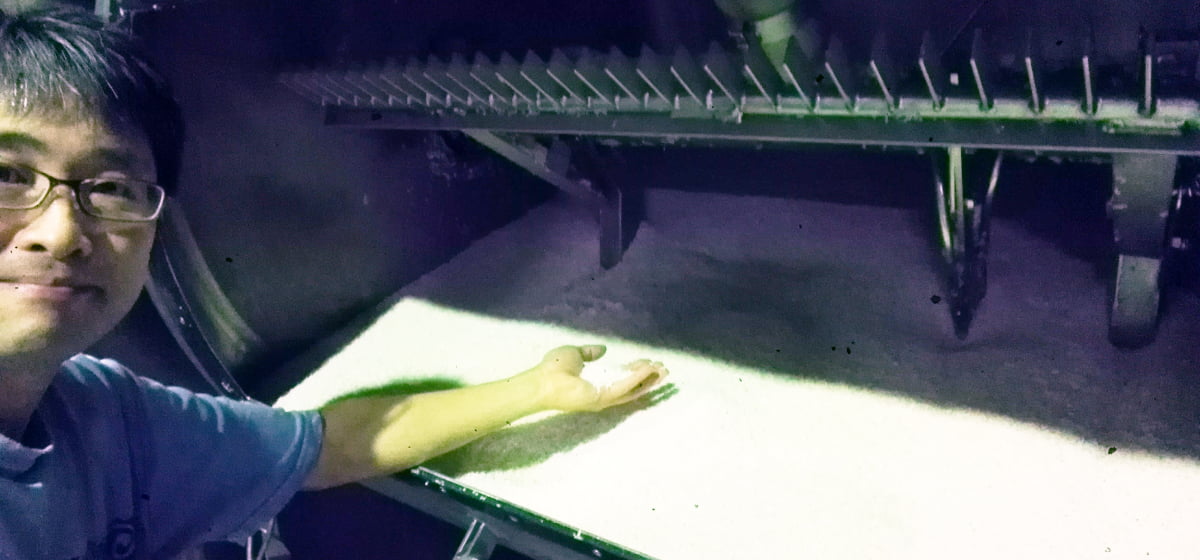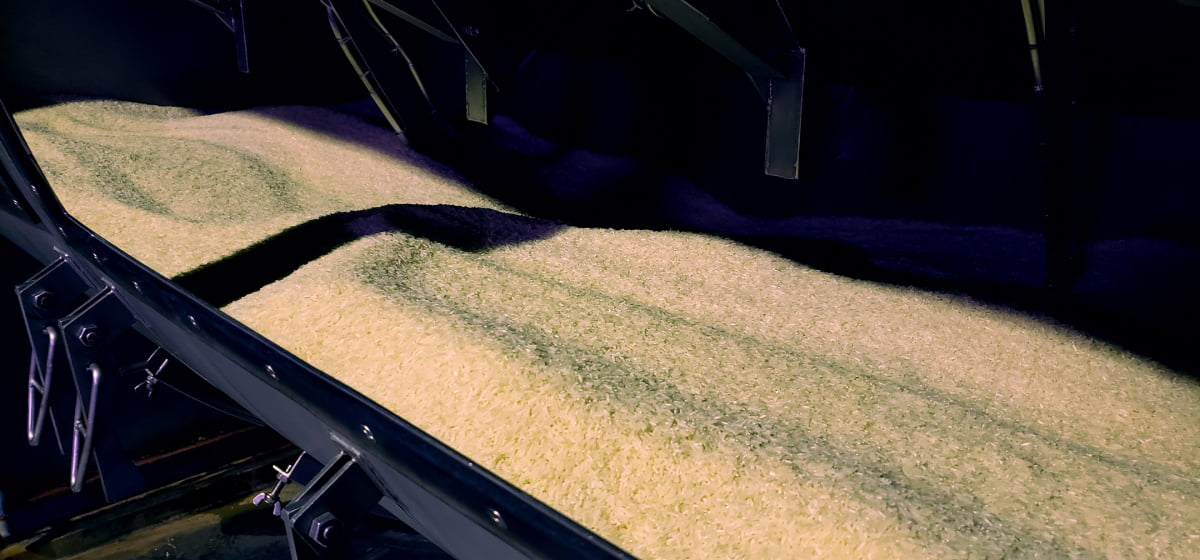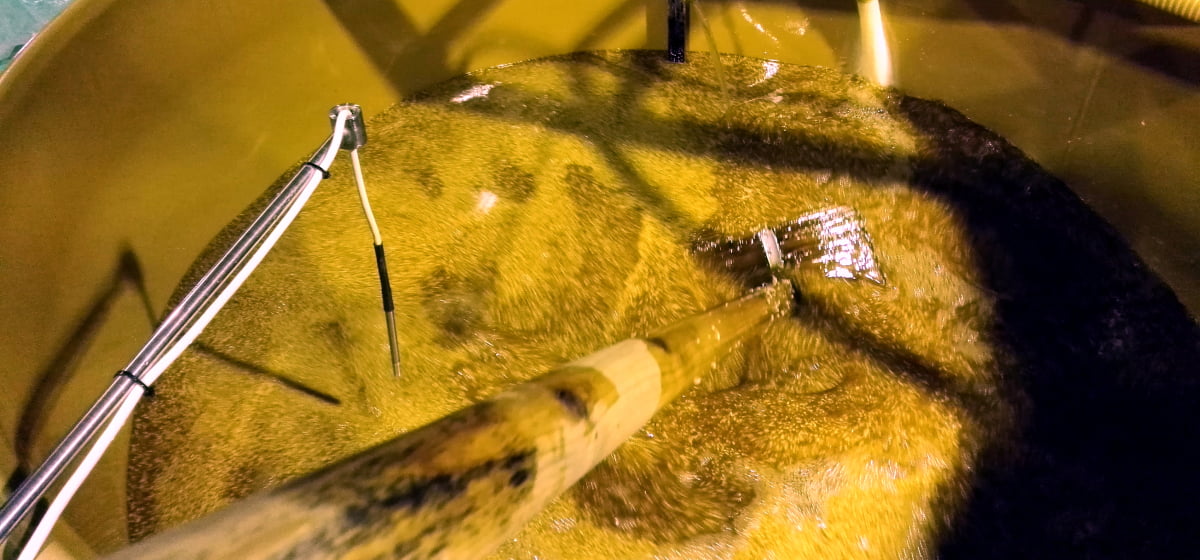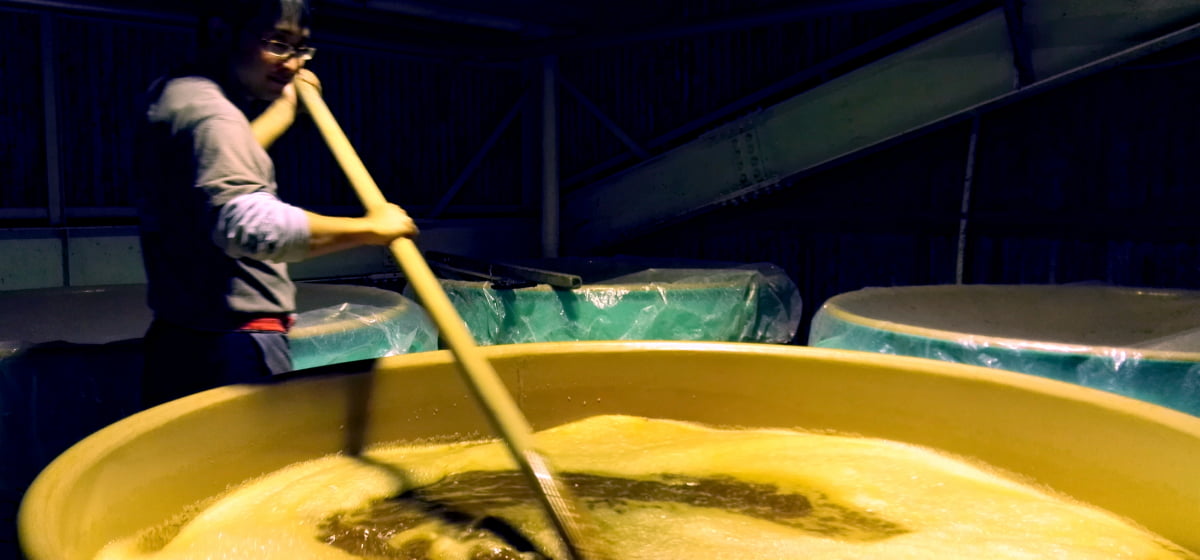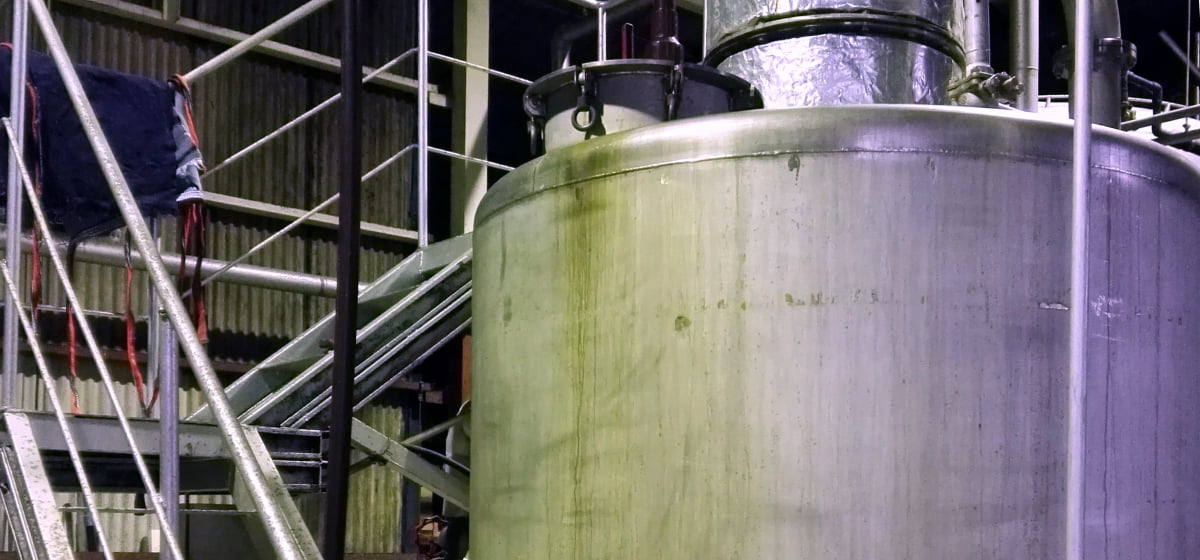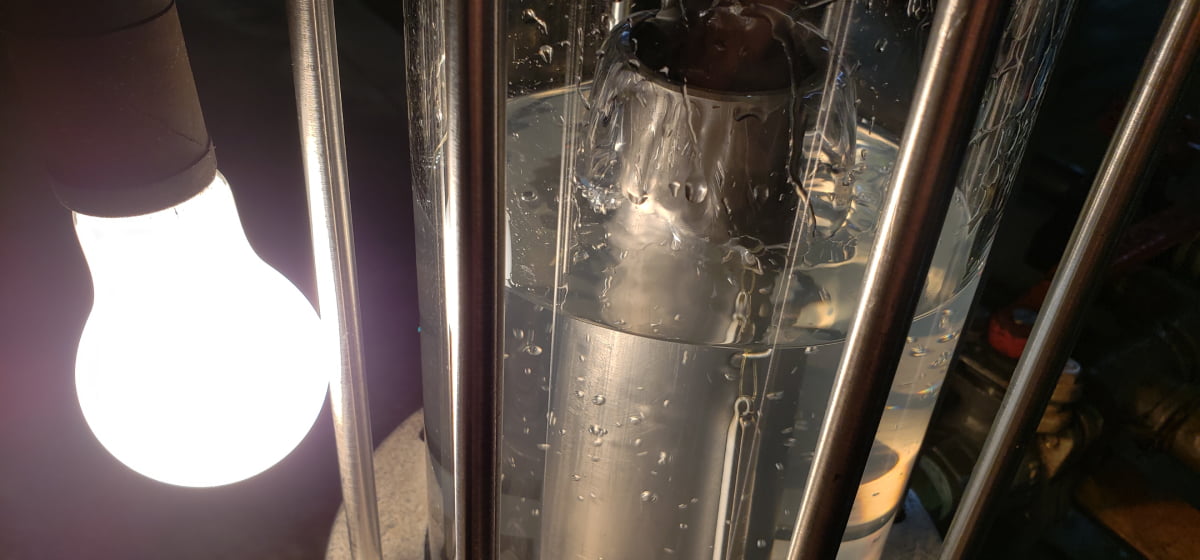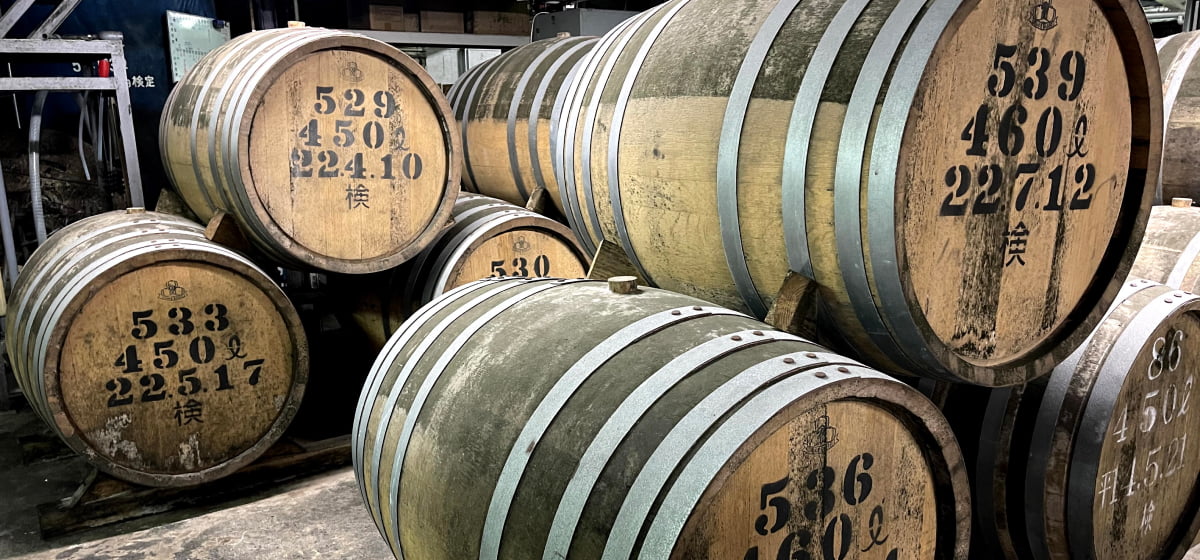弥生焼酎の深み
CRAFTSMANSHIP
弥生焼酎のことをもっと深く知りたい方のために、弥生焼酎の造り方や醸造所の歴史をご紹介します。
To know deeper about Yayoi Shochu, here is the history of the brewery and elaborate technique of making Yayoi Shochu.
01 : 麹づくり
黒糖焼酎の主な原料は、黒糖と米(こうじ)です。米はタイ米を使用しています。国産米は吸水率がバラバラで、蒸し上がりが均一になりません。 タイ米の方がいい状態で麹の出来が良く、味が全然違います。
米は自動製麹機で洗浄、浸漬、水切り、蒸し、冷却を行います。蒸しあがった米を冷却した後、麹菌を散布して適温を保ち約40時間熟成させます。 この時、麹菌は大量のクエン酸を生成します。このクエン酸には雑菌による汚染防止の働きがある為、「もろみ」の腐敗を防いでくれます。黒糖は高温の蒸気で溶解した後、25~30度に冷やして一次仕込後に使用。
The main ingredients of our shochu are brown sugar and rice (koji). We use Thai rice because the water absorption rate of Japanese rice is unstable and its softness becomes erratic when it is steamed. Thai rice, on the other hand, is more suitable for malting and tastes much better than Japanese one. By automatic malting system, the rice is washed, soaked, drained, steamed, and cooled. After cooling the steamed rice, koji microbes scattered on the rice and kept at the appropriate temperature for 40 hours for aging. At this time, yeasts of koji produce a large amount of citric acid, which serves as a natural preservative. After melting brown sugar by high-temperature steam, cool it and prepare for the next step.
02 : 一次仕込み
弥生焼酎の一次仕込みは甕仕込(かめじこみ)です。
ドラムで製麹(せいぎく)した麹を出して、甕に入れていきます。麹菌(こうじきん)が造るクエン酸によって、雑菌からの汚染を防ぎます。また、甕の中には糖をアルコールに変える「酵母(こうぼ)」が入っており、その酵母を増やす役目が、一次仕込みにはあります。
The first step preparation of Yayoi Shochu is called Kame-Jikomi (urn cultivation). Koji is moved from the auto malting system to an urn and produces shochu yeast in the urn and alters sugar into alcohol in the next stage.
03 : 二次仕込み
一次仕込みでしっかりと酵母(こうぼ)を育てたら、二次仕込みに移ります。
黒砂糖を溶かして、冷やしたものをタンクに移動します。 この甕から、一次モロミを黒砂糖の上にかけます。
一次仕込みで育った酵母(こうぼ)が、黒砂糖の糖をアルコールに変えていくのが二次仕込みです。
After cultivating shochu yeast in the first step, the next is brown sugar. Mixing the moromi with melted cool brown sugar in a tank, the shochu yeast converts the brown sugar into alcohol.
04 : 蒸留
蒸留方法には、常圧蒸留と減圧蒸留(げんあつじょうりゅう)という方法があり、最近は減圧蒸留の焼酎が多くなっていますが、弥生焼酎では、常圧蒸留で焼酎を蒸留しております。二次仕込みでは、モーターを使ってモロミ(米麹と酵母と黒糖を混ぜて、アルコール発酵させたもの)を蒸留器の中に移動します。
There are two ways of distillation: one is decompressive distillation and the other is atmospheric pressure distillation. The majority of products in the shochu market are from the former way but Yayoi Shochu is produced by the latter. In the second step, moromi, which is produced by alcohol fermentation after mixing koji microbes, yeast and brown sugar, is conveyed into the distiller using a motor.
05 : 貯蔵
蒸留を終えた原酒をタンクで貯蔵し、焼酎の味わいを深めます。
その後、甕や樽に移動して風味や酒質を変えていきます。
貯蔵には、新樽(いままで何も酒を入れていない新品)を使用しています。
材質は、樫の木で「樫樽(かしだる)」と言います。
After distillation, the undiluted shochu is stored in tanks to deepen the flavor of shochu. Then it is moved to barrels to adjust flavor and quality of taste. For storage, we use new barrels that have not been filled with anything before. These barrels are made of oak wood and are called Kashidaru (oak barrels).
06 : 瓶詰め・出荷
タンク・樽・甕で貯蔵した焼酎を瓶詰めし、キャップを閉めたら、目視検査を行います。
検査を終えた瓶にラベルを貼り、箱に詰めたら出荷します。
機械を使っての作業は、ラベル貼りくらいで、その他の行程は手作業です。
When the shochu is bottled and the lid is closed, each bottle goes through visual inspection. Then they are labeled, packed and all set to be shipped. All processes but labeling are done by human hand.



